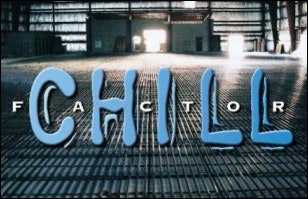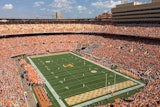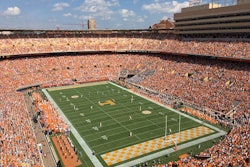Before jumping on the rink-building bandwagon, developers must grasp the increasingly sophisticated process of recreational ice refrigeration.

As recreational ice sheets spread south like free-falling fragments of a vast glacier, the process of keeping rink surfaces efficiently refrigerated-even in warm-weather locales-continues to evolve at a brisk pace. Never before have public entities and private entrepreneurs looking to get into the recreational ice business been faced with more options in terms of refrigeration components and controls.
"Thirty years ago, most rinks were built in Canada, which is pretty cold," says Steve Shutt, manager of the hockey division at Toronto-based Cimco Refrigeration. "Now we're getting into a whole new area. We're building rinks in Texas, New Orleans and Saudi Arabia. It's all over the world, and these rinks have different parameters than the old rink in northern Ontario, which would be frozen from September to April."
Regardless of a given facility's location, advances in refrigeration made within the past 10 years can translate into higher-quality ice for rink users and more cost-effective operation for rink owners. But as refrigeration systems become more sophisticated, those looking to jump on the rink-building bandwagon must enhance their basic understanding of refrigeration before making decisions that will affect the safety and efficiency of their new facility.

250+ Exhibitors & 190 Educational Sessions | abshow.com.
At its most basic, refrigeration is as much about removing heat as creating cold, and a working knowledge of heat transfer is vital to understanding the icemaking process. Simply put, heat always travels from a warm medium to a cooler one. Ice melting in a glass of water, for example, requires heat to be removed from the water, which then turns cold.
Two types of refrigeration systems employ this concept. In an indirect refrigeration system, a liquid refrigerant absorbs heat from a secondary liquid, or brine, which then pulls heat out of a rink floor as the brine is pumped through pipes embedded evenly throughout the floor. In a direct system, the floor's heat is removed by pumping the primary refrigerant directly through the floor's pipes.
Though the latter method can prove more efficient, indirect systems have become the preferred choice of refrigeration specialists and rink operators, allowing for safer control of potentially harmful refrigerants. In indirect systems, refrigerants such as ammonia, which is toxic, and dichlorodifluouromethane (or R-22, as it is commonly known), a type of Freon that is potentially hazardous to the environment, are contained within a rink's mechanical room. Direct systems, meanwhile, circulate these refrigerants through the nearly 10 miles of pipe that traverse a typical rink floor, where the potential for leaks is much greater. And because Freon is odorless, leaks can long go undetected. "I think that's been the biggest reason for the demise of the direct system," says Art Sutherland, president of Accent Refrigeration in Victoria, B.C. "So many facilities lose their entire charge over the years. The small amount of energy efficiency gained is lost when you have to pay $50,000 for a refrigerant charge."
Sutherland recommends the use of ammonia as the primary refrigerant in an indirect system-an even more efficient combination than a direct system utilizing Freon, he says. Moreover, the pungency of ammonia makes even the smallest leaks easy to detect and the need to replace an entire ammonia charge extremely rare.
In today's indirect systems, two types of brine are commonly used: calcium chloride and glycol. Advantages to using calcium chloride, a saltwater solution, include the fact that it exhibits superior heat-transfer characteristics to either ethylene or propylene glycol and that it requires less horsepower to pump. However, calcium chloride has the potential to be the most corrosive of the secondary refrigerants, if air is allowed into the refrigeration system.
The three components that facilitate heat exchange in an indirect refrigeration system include the chiller, the compressor and the condenser. The chiller is where heat from the brine is absorbed by the much colder primary refrigerant. Shell-and-tube chillers consist of a large, barrel-like shell encompassing smaller tubes. These interior tubes contain the brine, which transfers heat through the tube walls to the primary refrigerant flooding the larger shell.
Ammonia, for example, has an extremely low boiling point. As it absorbs the brine's heat and begins to boil, a compressor pulls the vaporized ammonia from the chiller, lowering the pressure within the chiller and further lowering the ammonia temperature. The compressor then pressurizes the removed ammonia gas, raising its temperature from 10 degrees Fahrenheit to a superheated 225 degrees. This process facilitates condensation of the ammonia gas once the gas reaches the condenser, which uses cooler ambient air, water or a combination of the two to extract heat from the gas. Sufficiently cooled, the ammonia returns to liquid form and is circulated back to the chiller, completing the refrigeration cycle.
Meanwhile, the chilled brine is pumped from the chiller into the rink floor, where it circulates through pipes made of polyethylene-or, in rare instances, steel-and absorbs the floor's heat through the pipe walls (a common floor layout places the centers of 1-inch pipes three inches from each other). Returning to the chiller several degrees warmer than when it entered the rink floor, the brine releases the heat it has absorbed from the floor back into the primary refrigerant.
Plate-and-frame chillers represent an alternative to the shell-and-tube variety, and appear to be gaining in popularity. While a shell-and-tube chiller may be 24 inches in diameter and 12 or 14 feet long, plate-and-frame chillers occupy an area roughly 4 feet high, 2 feet wide and 18 inches deep. Within this smaller chiller, heat is exchanged through the walls of plates that hold primary and secondary refrigerants in alternating sequence, much like a car's radiator. "Picture one plate being Freon, the next plate being glycol, the next one Freon, the next glycol again," says Daryl Cox of Arena Systems in St. Paul, Minn. "These plates are all touching each other, so it's very efficient. You get a high rate of heat transfer through a very small unit."
Just as the face of the chiller appears to be changing, so it goes for the compressor. Reciprocating compressors, which employ a piston action similar to that of a car's engine, began giving way in the early 1990s to screw compressors, which compress vaporized refrigerant by rotating the gas at high speed along the screw's rotors. "Screw compressors have been around for about 30 years, but they've been getting a lot more sophisticated, efficient and quiet than they were years ago," Sutherland says. "Now they're making them small enough and economical enough that it's really viable to use them in the recreational ice industry."
"Capital cost of the screw is higher, but the longevity is almost indefinite," says Tom Brenton, president of Rothmar Inc., an arena refrigeration company outside Toronto. "Manufacturers are coming out with 100,000-hour warranties on bearings on the screw compressors today, and a lot of them are giving fiveyear warranties on screws."
A facility doesn't have to choose one type of compressor over the other, Brenton adds. A rink can use a single screw compressor to bear the bulk of its refrigeration workload while occasionally employing reciprocating compressors to trim the load.
Three types of condensers are currently available, each employing different methods to remove heat from the vaporized refrigerant. The evaporative condenser is used primarily with ammonia plants but is catching on in Freon plants, as well. It sends the refrigerant through coils, the exteriors of which are subject to cooler ambient air and streams of cool water. The evaporation of the water off the exterior walls of the coils absorbs heat from the refrigerant inside.
Air-cooled condensers subject the refrigerant coils only to an air stream, while water-cooled condensers use a shell-and-tube approach to heat exchange, with cool water flowing through the interior tubes of the shell. The efficiency of condensers that utilize ambient air will be subject to fluctuations in outside temperatures, since these condensers are located outside the arena. Air-cooled condensers, for example, would not be the best choice for rinks that operate year-round in climates with high summer temperatures or rinks in warm-weather locales.
Unfortunately, one component of a recreational ice facility that is among the greatest inhibitors of heat transfer is one that is quite literally cast in stone: the rink floor. Little can change the fact that concrete floors-and, to a slightly less pronounced extent, sand floors-do little to help pull heat through ice from its surface, where the greatest heat load in the whole equation originates and where the quality of the entire operation is measured. Concrete offers the advantage of permanent flatness and protection for the pipes encased within it. It's also easier for the novice to make ice from scratch on concrete, since sand can bear significant weight only after carefully saturating it with water and allowing it to freeze. When choosing concrete, it is recommended that a contractor who specializes in rink installation be hired to handle the project.
Contractors accustomed to working on expansive floors, such as those found in warehouses, might not have the skills to properly handle the single monolithic pour required of a rink floor filled with carefully spaced and suspended pipes. "With the cement slab, once it's done, you're stuck, and it's a half-million dollars to change it," Sutherland warns.
When installed properly, concrete floors maintain a consistent end-to-end ice thickness of roughly an inch and a quarter, which is easily monitored by regularly drilling through the ice to the concrete slab and taking measurements. Ice sheets that are any thinner can become a safety concern; any thicker and the ice itself begins to inhibit heat transfer. Additives now on the market can slow the curing process of concrete as it's laid, thus increasing its density and enhancing its heat-transfer capabilities.
In addition, alterations made to pipes placed within the slab are believed to facilitate heat exchange with the concrete by churning the brine flow along ribbed interior walls.
This turbulence, which begins to appear naturally in a smooth pipe when the brine is pumped at 10 or more gallons per minute, occurs at flow rates half as strong in the ribbed pipe, which completely rolls the fluid every five feet. "The side benefit is that this ribbing tends to stiffen the wall structure and make it physically more stable, so we can reduce our wall thickness by 20 percent, therefore increasing the capacity to draw heat," says Ralph Goddard, the former owner and current vice president of sales for Commercial Refrigeration Inc. in Edmonton, Alberta.
Goddard, who received the patent for the ribbed pipe less than two years ago, says that facilities incorporating the pipe in their rink floors can cut ice plant operation by as much as 90 minutes per day.
Sand, which is often chosen as a means to reduce initial construction costs, requires an ice thickness of at least two inches to protect the pipes, which are situated closer to the underside of the ice than when embedded in a concrete slab. Also, sand may shift over time. "We find that the sand floors don't stay level like the cement floors do, and you have to build the ice surface to accommodate the highest part of the rink," says Sutherland. "If you have one corner that's high, you have to have your ice two inches above that, so on the far side of the rink, you might have three or four inches of ice."
And measuring ice thickness with a drill can be dicey on sand-based rinks, since the pipes are more vulnerable to damage.
While much goes on beneath the ice surface, it is here where the effectiveness of a recreational ice refrigeration system is ultimately judged. In the notso- distant past, determining and adjusting the temperature of the ice surface involved a good deal of guesswork. An operator often would monitor only the changing temperature of the rink slab or of the brine as it returned from the floor. The refrigeration system was then adjusted based on the heat load to which the ice had been subjected or would likely be subjected during a given time frame or activity. Under these circumstances, it wasn't uncommon for pumps to run constantly.
Today, a single infrared camera positioned high above the ice provides an accurate surface temperature reading, and computerized monitoring systems dictate how a plant responds to fluctuations in the surface temperature.
"When you do a flood, the first place the temperature increases is on the surface, rather than on the slab," says Brad Smith of Cimco's micro-monitoring systems division. "So as soon as the system sees a flood, it will tell the plant to bring the temperature down and tighten it up a lot faster. If you only have a slab temperature reading, once you dump the hot water on the ice, you have to wait for the heat to migrate down through an inch and a quarter of ice to the slab. So you've got a bit of lag time, when what you're really trying to do in the first place is control the surface. That's where your ice conditions are reflected."
Sutherland offers another scenario: "If you take a well-sealed, well-insulated building and all of a sudden you have a major event for which all the lights come on, the doors fly open, 15,000 people walk through the door and all the humidity starts to come in from the outside - all that heat goes to the ice surface, and your plant typically can't respond fast enough. That's the biggest benefit of the infrared-picking up rapidly changing loads as soon as they happen."
Computer programs developed for the recreational ice industry can gather information from as many as 40 sensors in one rink, and the same program can be used to monitor up to six ice sheets at a time. For example, one sensor may detect a refrigerant leak, engage an exhaust fan in the engine room and automatically dial out an alarm page to the rink operator. Conversely, operators can check an arena remotely by dialing into the system via modem and laptop computer. "We find this is very good for companies that are involved in rink management," says Shutt. "They might have four or five rinks in different areas of town or different states, and they have one guy who can log on and check every one of those rinks."
Computers also allow usage schedules to be programmed into the ice plant, creating ideal ice conditions for specific activities at predetermined times of the day. "Let's say you have nothing all night, you have figure skating from 6 to 8 a.m. and then you've got hockey," Shutt says. "During the night, all the compressors are off, but at about 5:30 a.m. they come on to put the ice to 27 degrees, the temperature for figure skating. At 7:30 a.m., while the figure skating is still going on, those compressors kick on and start bringing the temperature of the ice down even lower, to 23 degrees, to get the ice harder and ready for hockey."
Programming for complete plant shutdown at night-as well as holidays and other down times-allows for significant energy savings. "I've seen rinks shut off for six hours at a time," says Smith. "We have guys calling us up, telling us they save $1,000 every month just in their water bill and by not running compressors. It's easy math. If you don't turn a 50-horsepower compressor on for six hours, that's money in your pocket."
Another advantage of micro-monitoring is that it allows for trend data to be analyzed and archived. Ice surface temperatures logged over the course of a day will reveal how many resurfacing floods took place, how long it took the ice to recover from each flood, how many compressors came on during recovery, how quickly the compressors came on and how quickly the refrigerant temperature dropped within the chiller. "The possibilities are unlimited," Smith says. "Whatever you want it to do, it'll do."
Making and maintaining ice is a more sophisticated process today than ever before, and this broad overview only scratches the surface of refrigeration dynamics and current industry trends. Rink developers are encouraged to consult a number of recreational ice refrigeration specialists to help build an understanding of efficient refrigeration techniques-and ultimately a quality ice facility, regardless of location or scope. Not only has recreational ice migrated into new geographic markets, but it has found an expanded place in the larger recreation landscape in an increasingly technological world.
"We look at the world around us, and it's becoming a lot more computerized," says Shutt. "Certainly rinks are, too, because rinks are not just rinks anymore. You've got hockey rinks on one side, you've got in-line skating on another. You've got banquet rooms upstairs. They really are taking the place of community centers right now, and they're a lot more complicated than they were."





































